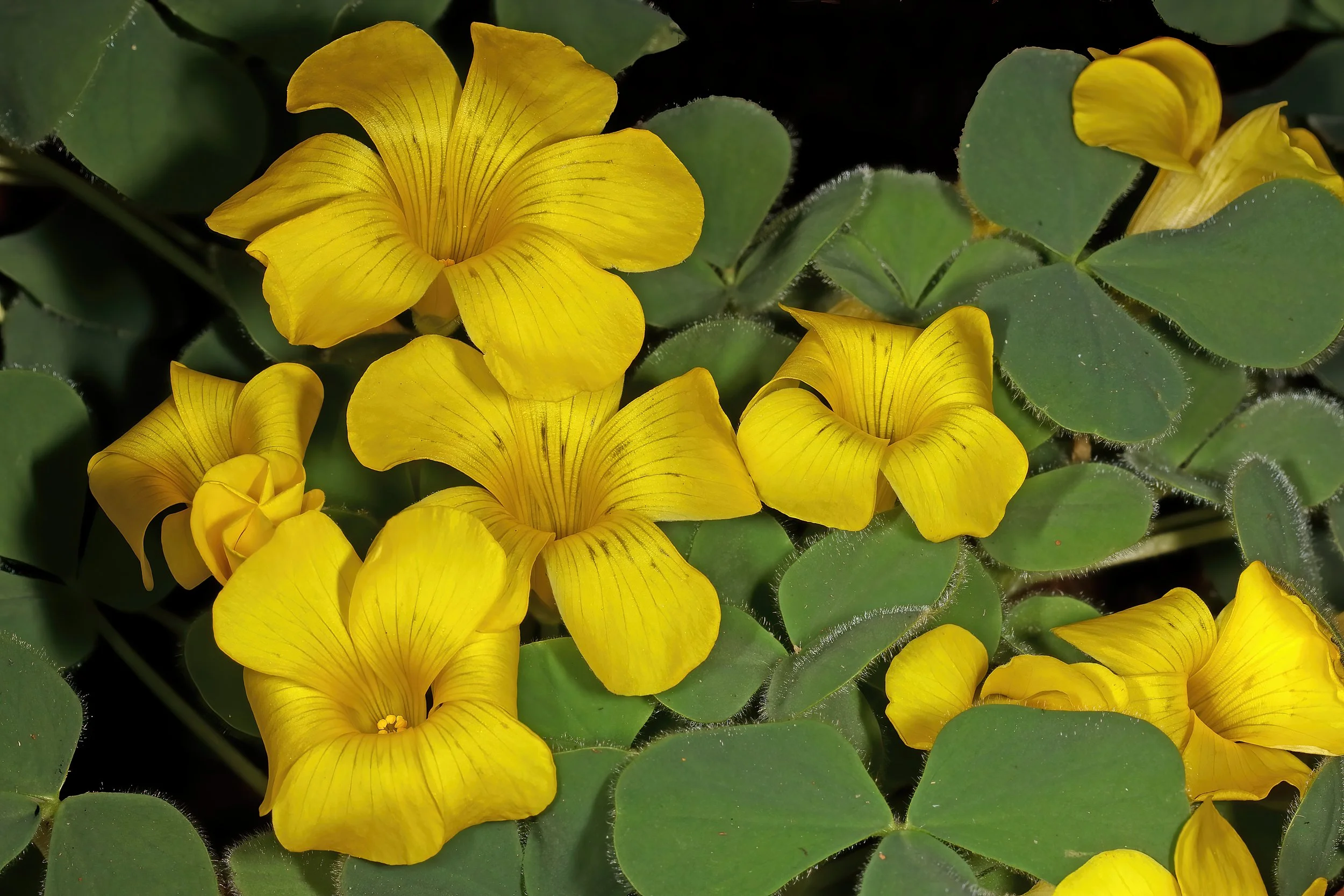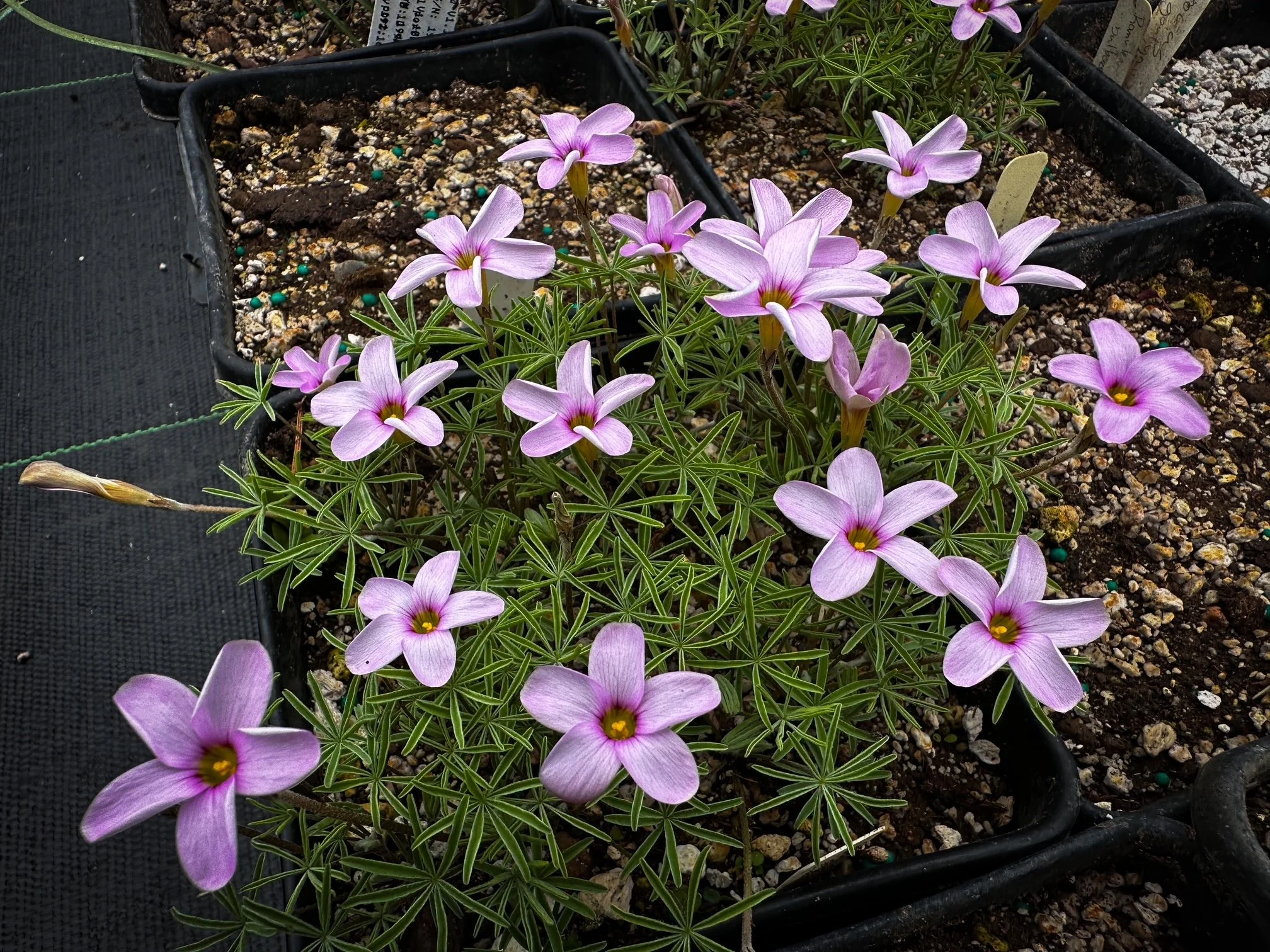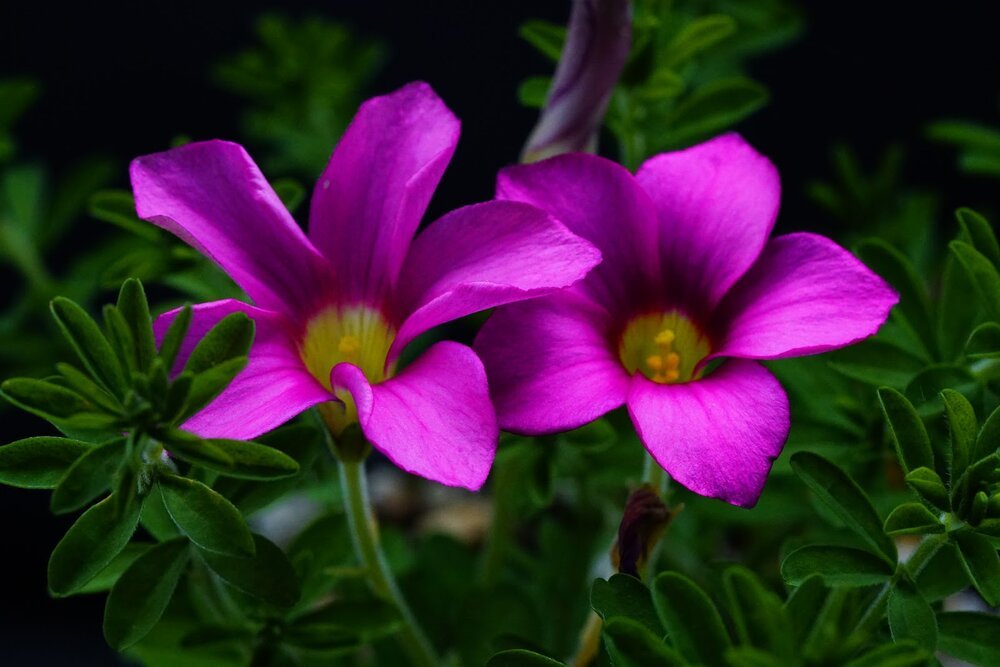

Oxalis melanosticta 'Ken Aslet'
This dazzling cultivar of Oxalis melanosticta is native to the winter-rainfall regions of the Western Cape, South Africa, where it grows on rocky slopes and open ground, often nestled among stones in well-drained, gritty soils. Adapted to a Mediterranean climate, it comes into growth with the autumn rains and rests through the dry summer.
‘Ken Aslet’ is a standout selection known for its bright golden-yellow flowers that open wide in the sun, held above a neat rosette of silvery leaves. It begins blooming in late fall or winter and continues through early spring, providing a welcome splash of color during the cooler months.
Best grown in a well-drained, sandy or gritty mix, this bulbous plant thrives in containers, alpine houses, or protected rock garden settings. It requires dry summer dormancy and is not tolerant of excessive moisture during its rest period. While generally considered hardy to USDA Zone 9, it has proven hardy to 12°F in Salem, Oregon, when grown in well-drained soil with winter cover.
The cultivar is named after Ken Aslet, a renowned British plantsman and alpine gardener, who introduced this particularly floriferous and vigorous form to cultivation. A delightful and easygoing choice for collectors of South African bulbs or anyone seeking vibrant winter interest.
This dazzling cultivar of Oxalis melanosticta is native to the winter-rainfall regions of the Western Cape, South Africa, where it grows on rocky slopes and open ground, often nestled among stones in well-drained, gritty soils. Adapted to a Mediterranean climate, it comes into growth with the autumn rains and rests through the dry summer.
‘Ken Aslet’ is a standout selection known for its bright golden-yellow flowers that open wide in the sun, held above a neat rosette of silvery leaves. It begins blooming in late fall or winter and continues through early spring, providing a welcome splash of color during the cooler months.
Best grown in a well-drained, sandy or gritty mix, this bulbous plant thrives in containers, alpine houses, or protected rock garden settings. It requires dry summer dormancy and is not tolerant of excessive moisture during its rest period. While generally considered hardy to USDA Zone 9, it has proven hardy to 12°F in Salem, Oregon, when grown in well-drained soil with winter cover.
The cultivar is named after Ken Aslet, a renowned British plantsman and alpine gardener, who introduced this particularly floriferous and vigorous form to cultivation. A delightful and easygoing choice for collectors of South African bulbs or anyone seeking vibrant winter interest.






